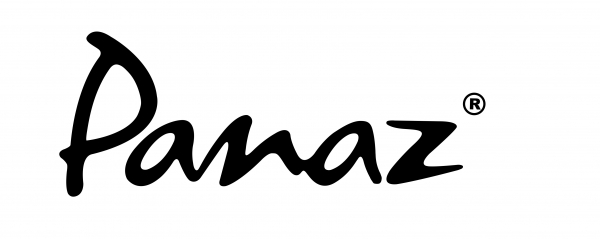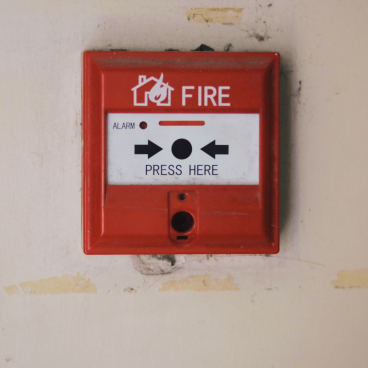Material Source Studio Presents: Fire.
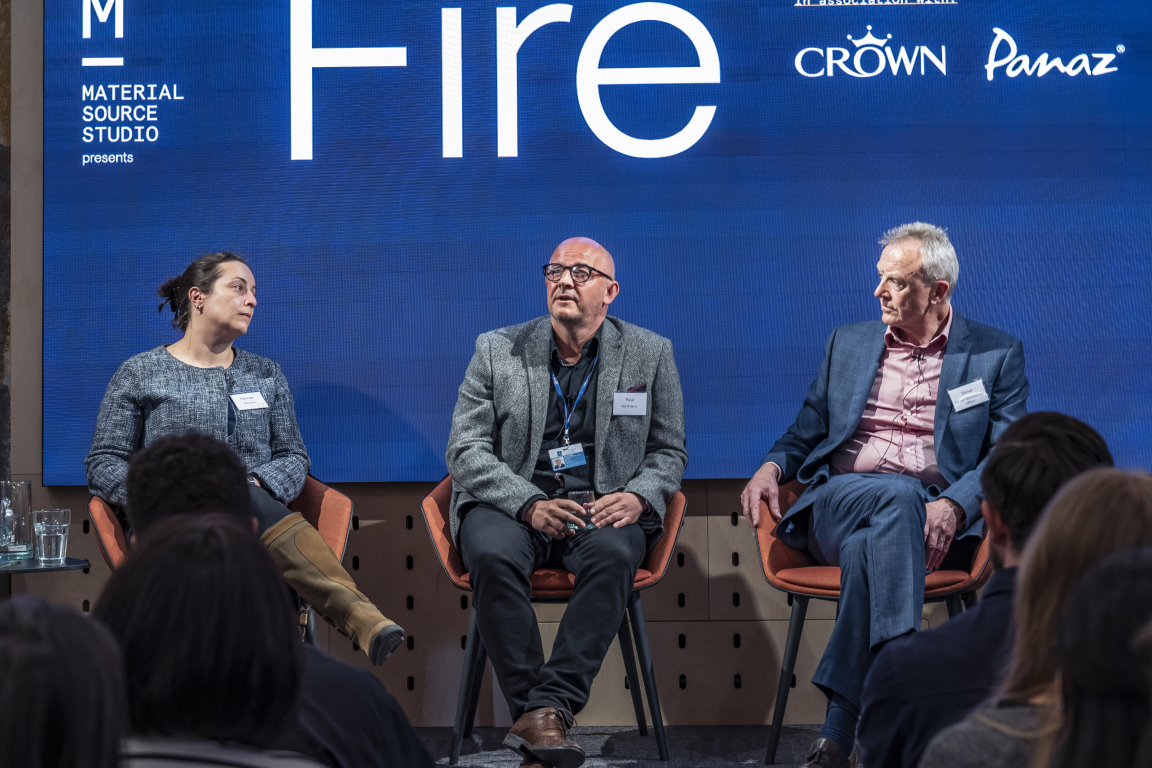
Credit: Tim Ainsworth Photography
Our third Material Source Studio Presents seminar was an absolute corker, tackling the complex and emotive subject of Fire from four different perspectives.
Joining host David Smalley of Material Source, were four world-class panellists - Hannah Mansell MSC, Group Technical Director for Masonite companies in the UK (Premdor Crosby, DSI); Paul McNeill, Director, Ball & Berry; Steve McGuirk, Former GM Chief Fire Officer; and Erin Shoesmith, Health and Safety Partner, Addleshaw Goddard. They discussed the recent changes to the built environment in relation to fire safety, plus highlighted the work that's still to be done.
As always, an hour was just enough time to scratch the surface of this incredibly complicated topic. But when asked whether there was anyone in the audience that hadn't learnt at least one thing from the night's session, not one person raised their hand. Proof of an insightful evening for all.
The event also coincided with some significant sector milestones - including Royal Assent being granted for the Building Safety Act. And an announcement from the HSE on the registration of high-rise buildings from April 2023, and the new safety management requirements applying from October 2023.
The HSE stated: "The new regime will take shape, evolve and strengthen over the next 18 months as we build up our services and prepare for the different functions of the regulator to come online. As our powers continue to increase in the coming years, people will see fundamental changes to the safety and performance of all buildings and increased competency among industry professionals that raises standards year on year."
For anyone that couldn't make the event, or for those that did attend, and want a recap, here are some of the highlights.
Upfront was an introduction from Erin, offering an expert legal perspective on fire regulation in the built environment.
- There is seismic change afoot - once in a generational change off the back of the events of 2017, which exposed serious failings in both the fire and building safety environment
- The Grenfell Tower tragedy put into context why there's a need for reform around fire and building safety
- Dame Judith Hackitt put together 53 recommendations, which have all been accepted by the government
- Two changes have been made already: the Fire Safety Act, and the Building Safety Bill
- The Fire Safety Act clarifies and extends the Regulatory Reform Fire Safety Order, so responsible persons of multi occupancy buildings need to assess and manage the risk of fire in relation to the external facade of the building i.e. cladding, balconies and windows and internal doors opening onto the common parts
- The Building Safety Act - "massive change for industry" - is not just in relation to fire safety, it's about structural integrity too, and puts a spotlight on higher risk buildings such as those with two or more residential properties, 18 metres in height or at least 7 storeys, student accommodation, care homes and hospitals that reach the height threshold - this relates to 12,500 buildings in England, alone
- Many of the provisions apply to all dwellings, though - not just high rise
- The claim period has been extended in some instances from 6 years to 30 years - something that's previously been unheard of in the legal world
- As well as new regulatory framework being provided, these reforms signify real cultural change
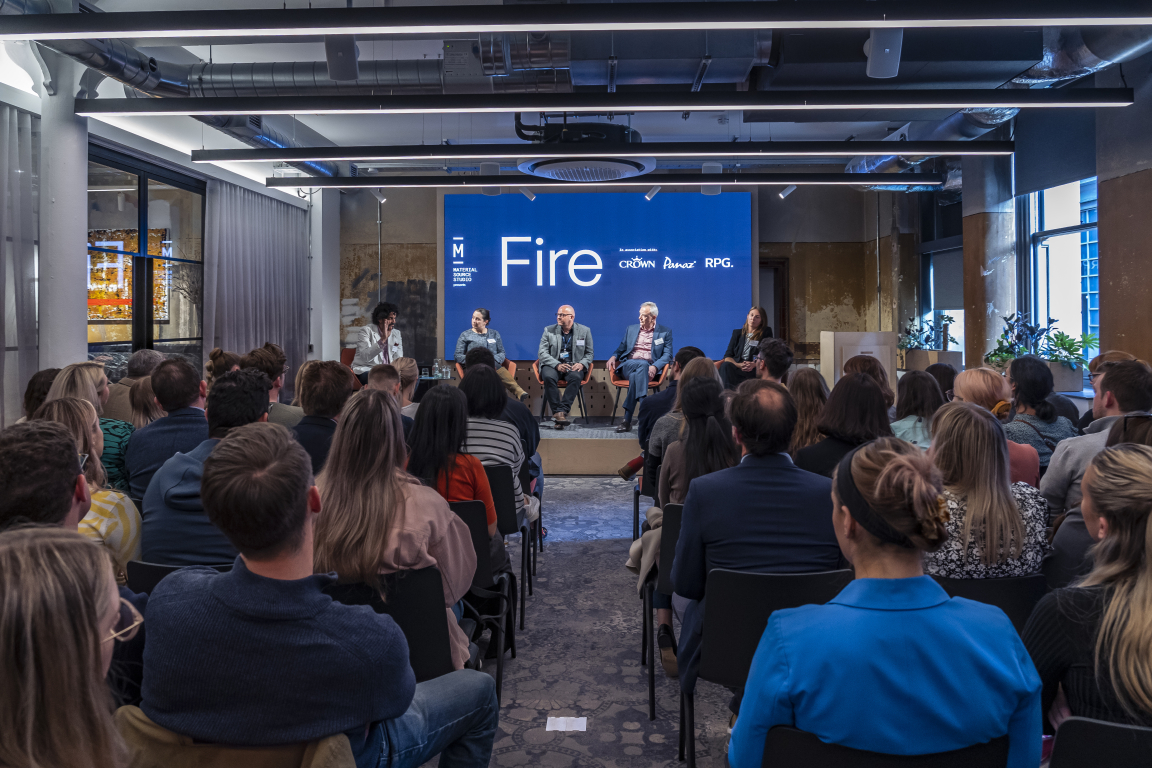
Credit: Tim Ainsworth Photography
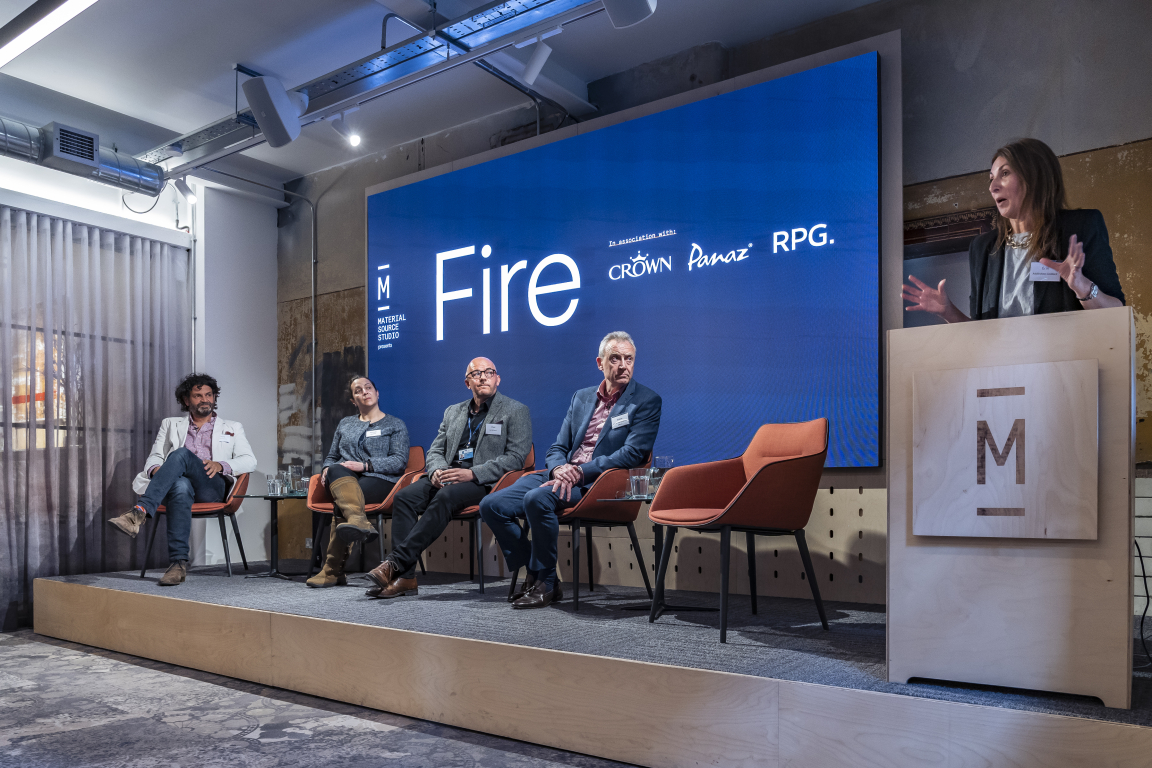
Credit: Tim Ainsworth Photography
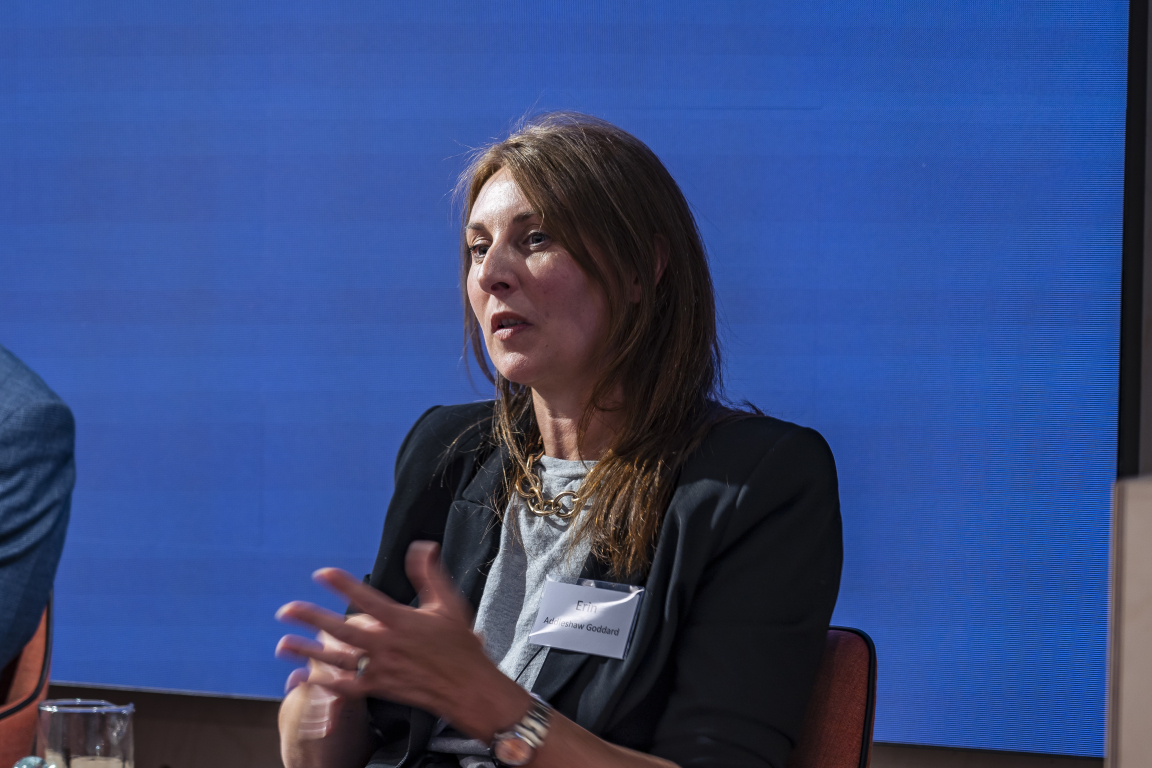
Credit: Tim Ainsworth Photography
After setting the scene, the conversation picked up where our recent Fire roundtable left off. What else has changed in the last 5 years?
"In a word: complexity", answered Steve, "so the drivers of how you design, construct and manufacture materials, and buildings, there are tensions that weren't so obvious before. On the one hand you have climate change, which most people believe is the biggest issue facing the planet. And on the other hand, a fire safety driver. And sometimes those things contradict each other. If you then bring in the third strand, which is the economic shift, how do you design a building in amongst all of that, that's agreeable to clients? It's a dilemma."
Sharing his view, Paul comments: "Architects are asking us a lot more questions - we spend a lot more time on projects. We're asking for a lot more information than we used to - more test data and certification data. We're also seeing many more contractors with design managers - something we didn't see before. Overall, we've seen a massive uplift in standard. What we want across the board is to do more than meet the minimum standard."
Erin agrees: "Competence needs to be a focus - making sure everyone on these projects has the right training and knowledge, and understands accountability."
"The bigger contractors are spending money on health and safety, and fire safety, which is considered a big, big issue now. In my experience, it wasn't always on the agenda before. Not everyone understood what their role in relation to fire safety was. But that has changed significantly. People now realise there is more than one responsible person - they all have to coordinate their fire safety measures within a building."
From a manufacturing perspective, Hannah added: "This landscape of transparency, paired with competency. It's one thing sharing test data with clients, but we also need to educate them on how to scrutinise these documents.
"And we need transparency from everybody's perspective. Put people front and centre in any decision making."
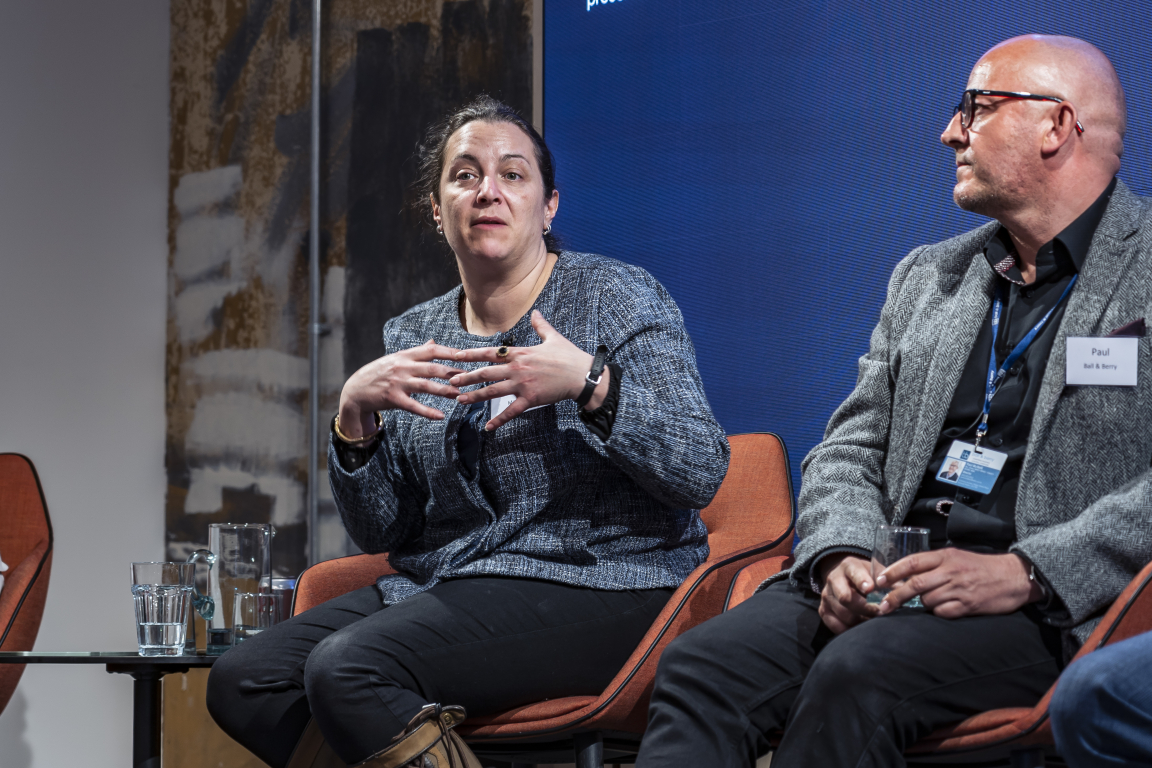
Credit: Tim Ainsworth Photography
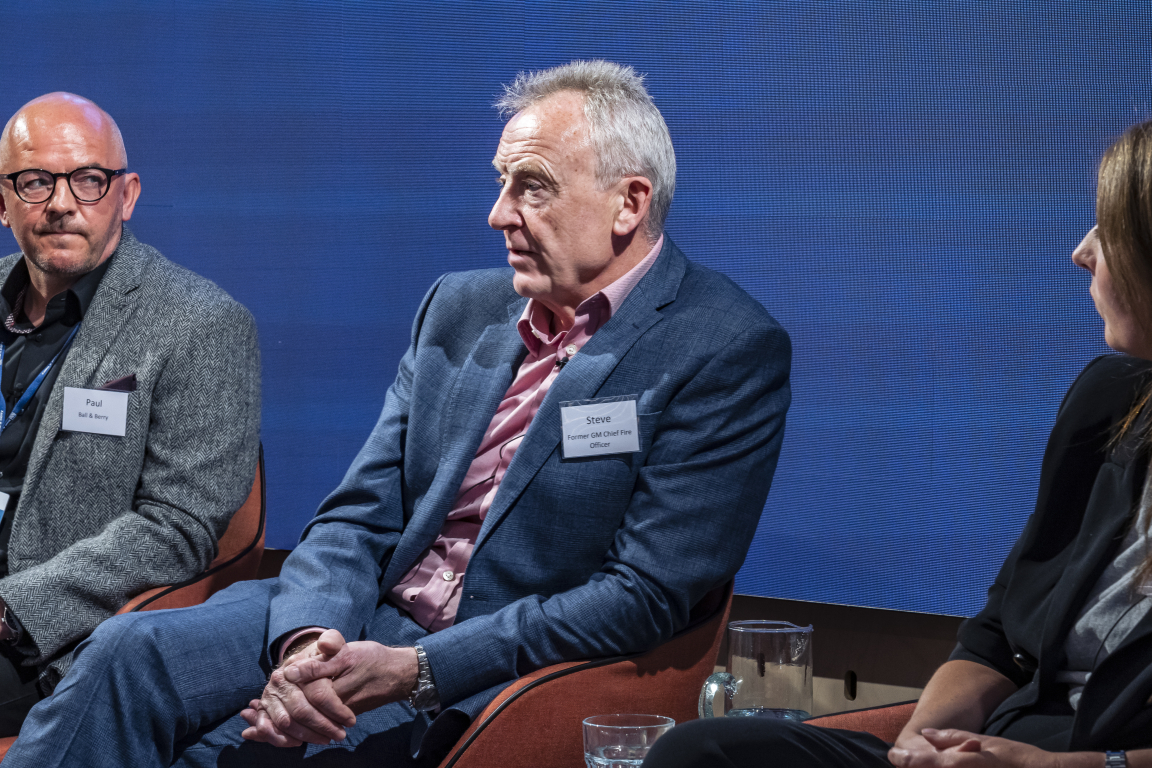
Credit: Tim Ainsworth Photography

Credit: Tim Ainsworth Photography
In addition to discussing what has changed, challenges were inevitably highlighted:
- A balance must be struck when it comes to assessing risk - we must ask what the real risk is, especially in heritage and listed buildings. Closing a building comes with moral implications
- Insurance doesn't always allow architects to be covered for fire safety, so outside expertise is relied on
- Because of delays, a building could be handed over but without certification then left unoccupied
To close, each panellist was asked to offer the audience one piece of advice.
Paul: "Engage early. Stage 4 is too late."
Steve: "Consider joining organisations that are not necessarily on your radar, such as the Institute of Fire Engineers. It will expand your professional network, and allow you access to advice when you need it."
Hannah: "Question everything. And get conflicting views."
Erin: "Keep a record of everything you do, and discuss everything with the responsible party."
Bringing the event to a close was a poignant remark from Paul: "Do the right thing".
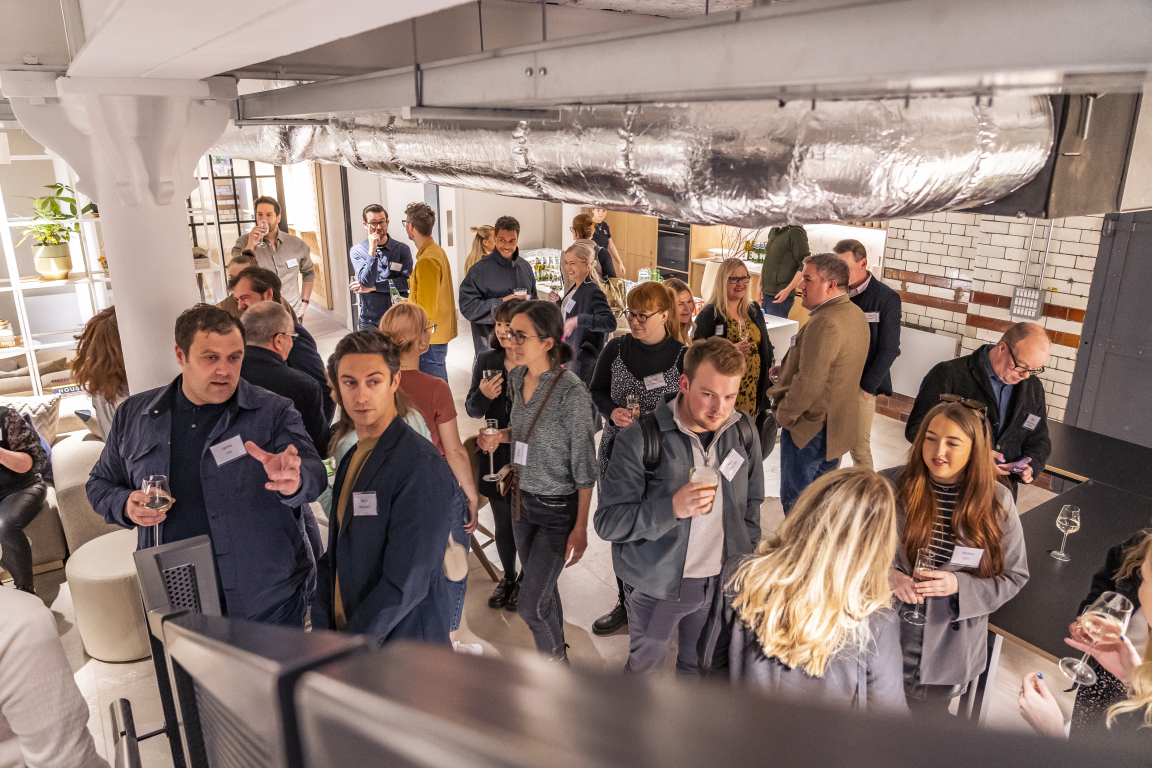
Credit: Tim Ainsworth Photography
We'd like to say a huge thank you to our panellists and audience. Plus a special thank you to our sponsors Crown, Panaz and Radii Planet Group - all partners at Material Source Studio.
Our next event will be dedicated to Future of the Workplace on 18 May. Send your RSVPs to events@materialsource.co.uk. And please also let us know if you'd like to attend our partner's upcoming events at the Studio. Details here.



